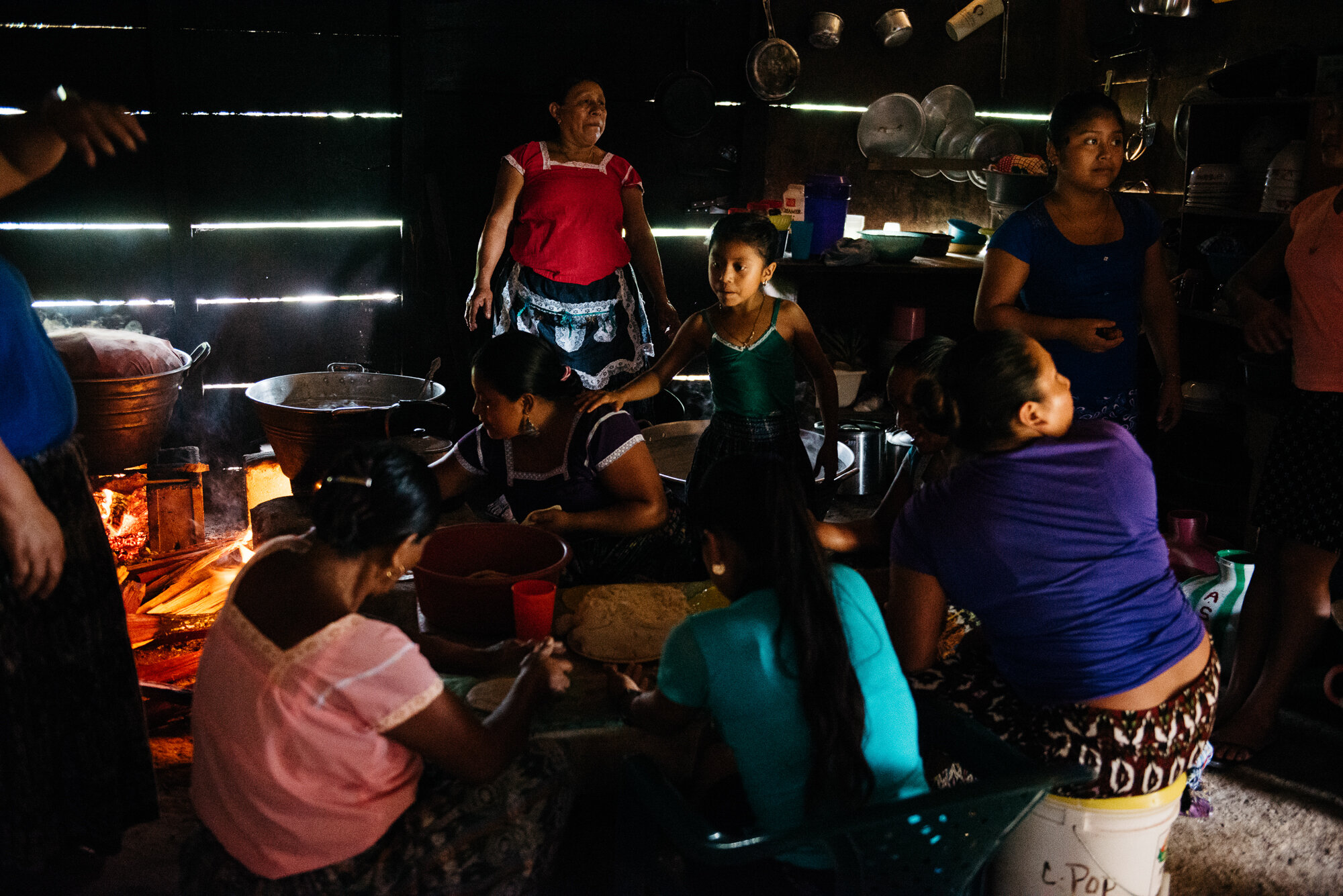MAYA MATRIARCHS
ESSAY + VISUALS BY LAUREN V. ALLEN
PUBLISHED IN WHETSTONE MAGAZINE: VOL 004 MARCH 2019
Focusing on the evangelical Maya women who find a space where they are revered and respected in their patriarchal society, this story visually discusses feminism, traditions and the territorial tensions in a much forgotten corner of the Global South — Jalacte, Belize.
Rosa Sacul and her mother-in-law, Adelina Sacul, lower a heavy steel bucket of pork hung by rope from the hand-built wooden rafters of their cohune palm thatched home. They are preparing to make caldo, a spicy hot soup, as Rosa’s husband, the village pastor, prepares to leave for church after breakfast.
Inside the humble house, Rosa and Adelina are starting the fires that will soon be used to cook the soup, tortillas and poch, a tamal of fermented masa steamed in banana leaves. Women from across the village start to arrive at Rosa’s home, bringing with them spices, herbs and masa. “Everyone brings something to cook,” Aurelia Mo says, as she brings in herbs and peppers from her family milpa, or garden.
Outside, Stephany Caal and Aurelia walk in worn flip-flops down a steep, rocky path to the nearby creek to wash a bucket of nixtamalized maize. They will soon walk to a local woman’s house, who owns the only mechanical grinder in town, to turn their maize into masa for a few Belizean cents. “It’s a community grinder,” Aurelia says. “Everyone uses it.”
As the village women arrive, they gather around a small table and start hand-forming tortillas with quick rhythmic staccato surrounded by light chatter and giggling in Q’echi’. “Smash it over and use your fingers and side like this,” Aurelia says as she demonstrates her tortilla-making skills with the palms of her hand gently beating out a ball of masa with five other women as a sixth manages the comal, a flat pan used to cook tortillas over open fire.
These perfectly circular and evenly flat tortillas are not only a staple of the Maya diet, but also a source of pride amongst the quiet, humble women. It is a tradition that they will begin teaching their daughters at a young age. “We start working in the kitchen around eight or nine,” Aurelia says. “We do simple things like cutting vegetables and get to make tortillas as we get older.”
“The men may work hard, but these families wouldn’t survive without the women.”
“They can hear us having church,” Luis Assi, the Indigenous Community Liaison for the International Pentecostal Holiness Church says as he points to the Guatemalan border. “It’s ok, they can worship with us.”
The border is only about 100 yards from the church property. A thick line of brush separates Jalcate, Belize from Santa Cruz, Guatemala.
Jalacte, a Q'eqchi' Maya mountain village of about 500 people borders Guatemala, where political and territorial conflicts have been common for hundreds of years, ultimately peaking in the early 1980s. Now, Maya lands are being threatened by the Belizean government for the building of a highway and border stations.
Despite the tensions surrounding this small village, daily life progresses. “Free movement,” happens daily as Belizeans sell goods to Guatemalans across the border bypassing customs agents.
Maya children attend school while women cook for their husbands and families. Men work in agriculture or take a 90 minute bus into Punta Gorda, the district’s main city, for work. The church is a center for communities to gather and find peace.
Gene Lewis, a United States missionary with IPHC based in Belmopan, Belize, has been traveling to Jalacte since 1983. “I’ve seen this village grow up in the church.” He mentions that many of the village elders were young teenagers when he started working in Jalacte.
“Rosa and Adelina, they are the matriarchs. Watch how they see everything go on in this kitchen,” Gene says as Rosa and Adelina stand near the fires with plastic cups of coffee in their hands, a combination of Nescafe, powdered creamer and ample sugar. Their shiny pots hang from the rafters above as a sign of their pride. “The women make this village tick,” says Gene. “The men may work hard, but these families wouldn’t survive without the women.”

















